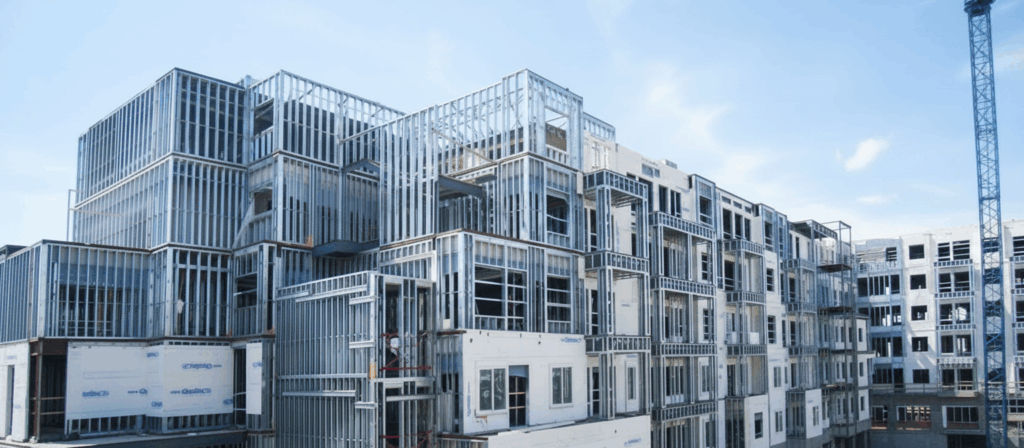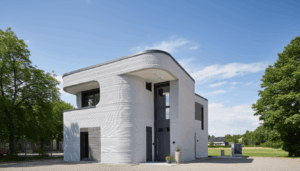The construction industry faces constant challenges like tight deadlines and rising costs. Additionally, there is a growing demand for sustainability. Therefore, the search for smarter building methods has become critical. For decades, slow and heavy processes defined traditional construction. Specifically, this involved labor-intensive concrete and masonry. However, a powerful shift is underway. An evolutionary technology, Light Steel Framing (LSF), drives this change.
So, what makes LSF a compelling option for the future? The answer lies in its speed, intelligence, and efficiency. Indeed, these qualities directly address modern pressures. This article explores the key advantages of LSF, moving beyond a simple definition. Ultimately, it reveals why LSF is becoming the backbone of modern construction projects globally. We will examine how its features set new benchmarks for performance, sustainability, and design freedom.
What Exactly is Light Steel Framing (LSF)?
First, it is essential to understand what LSF is. At its core, LSF—also known as cold-formed steel (CFS) construction—uses structural frames made from factory-produced, galvanized steel sections. These components differ from the heavy, hot-rolled steel beams used in skyscrapers. For instance, they are lightweight, thin (typically 1-3 mm), and shaped at room temperature.
Engineers use advanced software to design these precise studs, tracks, and joists. Then, workers assemble them into panels, trusses, and entire building modules. This manufacturing process is key. Specifically, it moves most construction work from the chaotic worksite to a controlled factory environment. This fundamental shift from on-site to off-site work is the first clue as to why LSF is so revolutionary.

The Unbeatable Advantage: The Speed of Construction
The most immediate and impactful benefit of LSF is the dramatic acceleration of project timelines. In construction, time is money. Consequently, LSF saves a significant amount of it. This speed comes from optimizing the entire building process, not from cutting corners.
The primary driver is prefabrication. Workers assemble wall panels, floor systems, and roof trusses in a factory. This happens concurrently with the on-site foundation work. By the time the groundwork is ready, the factory has manufactured the superstructure for delivery. This parallel workflow eliminates the linear delays common in traditional methods.
Once on-site, assembly is remarkably fast. Workers can easily handle the lightweight components with minimal heavy machinery. Furthermore, their precision engineering ensures a perfect fit. There is no on-site cutting, welding, or waiting for concrete to cure. As a result, a skilled team can erect a building’s frame in days, not weeks. This speed directly reduces labor costs, allows earlier project completion, and provides a faster return on investment.
The Power of ‘Light’: Redefining Structural Efficiency
The word “light” in Light Steel Framing is more than a descriptor. In fact, it is a key engineering advantage with far-reaching benefits. Steel boasts one of the highest strength-to-weight ratios of any common building material. This means LSF structures can provide great strength while imposing significantly less load on the foundation. This single characteristic creates a cascade of efficiencies:
- Reduced Foundation Costs: First, a lighter superstructure requires smaller and simpler foundations. This means less excavation, concrete, and steel reinforcement. As a result, projects save on material and labor costs from the start.
- Ideal for Challenging Sites: Next, LSF is ideal for projects on difficult sites, such as those with poor soil conditions. The reduced weight of an LSF structure can make a previously unbuildable project viable.
- Vertical Expansion: Also, LSF is the perfect solution for adding new floors to existing buildings. Its low weight often allows for vertical expansion without requiring costly reinforcement of the original structure.
- Simplified Logistics: Finally, LSF simplifies logistics. Transporting lightweight steel frames is more cost-effective and uses less fuel. On-site handling is also safer and requires less heavy lifting equipment.

Beyond Speed and Weight: The Core Pillars of LSF
While speed and lightness are headline features, the true strength of LSF lies in other attributes. These factors make it a profoundly modern building system.
Unmatched Precision and Quality Control
Machines manufacture LSF components from digital designs. Therefore, they are produced with sub-millimeter accuracy. Every stud is perfectly straight and every angle is precise. This process eliminates the human error and material inconsistencies common in conventional construction. The result is superior build quality. This precision improves structural integrity. In addition, it simplifies the work for subsequent trades, which reduces rework and waste.
A Champion of Sustainability
In an era of environmental consciousness, LSF presents a compelling case for sustainability. Steel is the most recycled material on Earth. The steel in LSF contains a high percentage of recycled content. Moreover, it is 100% recyclable at the end of the building’s life. This creates a closed-loop system with minimal landfill waste. Furthermore, the factory-controlled manufacturing process is highly efficient, generating almost no on-site waste because machines cut components to exact specifications. This contrasts sharply with the significant waste from a typical construction site.
Design Flexibility and Architectural Freedom
A common misconception is that LSF is only suitable for simple, box-like structures. The reality is quite the opposite. The inherent strength of steel allows for the creation of large open-plan spaces and complex designs. For example, these features would be difficult or expensive to achieve with other materials. Architects can easily integrate LSF systems with any type of exterior cladding. This allows them to realize their vision without compromise.
Conclusion
The question we began with was why LSF represents the future of construction. The answer is clear: it is a system designed to solve today’s most pressing construction challenges.
- It is fast, cutting down project timelines and delivering a quicker return on investment.
- It is light, reducing foundational costs and enabling projects on difficult sites.
- It is precise, ensuring a higher standard of quality and minimizing on-site errors.
- It is sustainable, promoting a circular economy through recyclability and waste reduction.
LSF represents a fundamental shift to a smarter method of construction. The mandate for the evolving industry is clear: embrace technologies that deliver superior efficiency and quality. This is an absolute necessity. Light Steel Framing leads this transformation, standing as a primary solution to shape the faster, lighter, and more sustainable architecture of the future.







